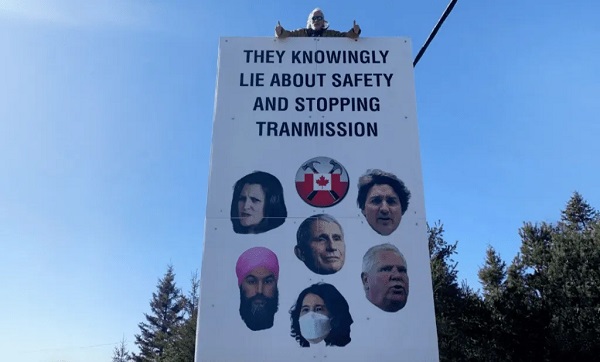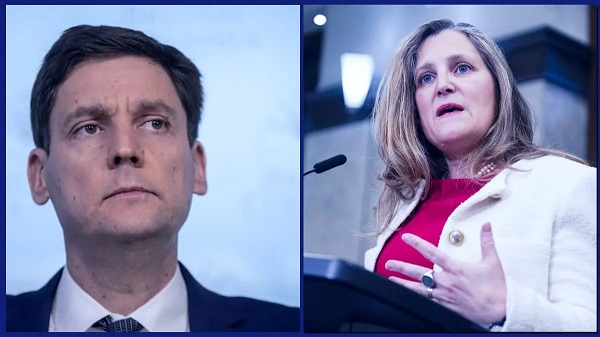Energy
Navigating New Political Currents: How the U.S. Election Could Impact Canadian Energy – Resource Works

From EnergyNow.ca
By Resource Works
More News and Views From Resource Works Here
As Stewart Muir, CEO of Resource Works, attends the annual Pacific North West Economic Region (PNWER) conference in Whistler this week, the unexpected news that President Joe Biden won’t be on the November 5 presidential ballot sent shockwaves through the policy and trade discussions.
For policy wonks like those I’m gathered with in Whistler this week, could there be a better gift than the conundrums unleashed over the past week onto the U.S. political landscape?
The rise of Donald Trump and the potential presidential candidacy of Kamala Harris conjure up a staggering range of possibilities. When it comes to trade, international relations, and the future of the foundational natural resource sectors that unify the ten sub-national jurisdictions making up PNWER, this is what everyone is going to be talking about..
With Trump securing the Republican nomination last week, Canadian energy producers were left pondering what his potential return to the White House might mean for their industry. Like a wildcatter drilling an exploratory well, Trump’s energy policies promise both gushers of opportunity and dry holes of risk for our oil and gas sector.
On the upside, his pledge to unleash American energy production could boost overall demand and prices, indirectly benefiting Canadian exporters. His promised regulatory reforms may also grease the wheels for new pipelines and LNG terminals, easing the flow of our energy products southward. It’s enough to make an Albertan oilman shed a tear of joy into his Stampede pancakes.
But before we break out the champagne (or perhaps a nice Canadian ice wine), consider the potential downsides. Trump’s “America First” trade policies and tariff threats loom like storm clouds on the horizon for Canadian exporters. His vow to gut environmental regulations faster than you can say “EPA” could leave Canadian producers at a competitive disadvantage, burdened by our quaint commitment to responsible production practices.
Yet in this potential regulatory race to the bottom, I spy an opportunity as golden as the fields of Saskatchewan canola. By doubling down on our world-class environmental and safety standards, Canadian energy could position itself as the responsible choice in global markets.
Picture it: “Canadian crude – now with 50% less guilt!” We could be the Tesla of fossil fuels, if you will.
Of course, there’s a risk in tooting our own sustainability horn too loudly. Trump isn’t known for his fondness of perceived criticism, and antagonizing him could lead to retaliatory tariffs faster than you can say “covfefe.” We’ll need to navigate this terrain as carefully as a pipeline through the Rockies.
On the other hand, if Kamala Harris, Biden’s preferred successor, retakes the White House, the landscape will look markedly different. Harris is likely to continue the Biden administration’s focus on climate action and clean energy. This could mean stronger support for renewables, potentially benefiting Canadian sectors involved in green technology and clean energy exports. However, stricter environmental regulations and a push for rapid decarbonization might challenge traditional oil and gas industries.
A Harris administration might prioritize cross-border collaboration on climate initiatives, providing opportunities for joint projects in carbon capture and storage (CCS), hydrogen development, and renewable energy. This could foster closer ties and create a more integrated North American energy market focused on sustainability.
Bloomberg reports that while Harris wouldn’t be likely to make major shifts to the direction Biden charted on climate change, her opposition to offshore drilling and fracking suggests her signature move as president could be bringing fierce oil industry antagonism to the White House. As California attorney general, she brought lawsuits against energy companies, prosecuted a pipeline company over an oil leak and investigated Exxon Mobil Corp. for misleading the public about climate change.
Yet, such a focus on environmental standards could also mean increased scrutiny and regulatory hurdles for Canadian energy projects seeking to enter the U.S. market. Canadian producers will need to balance compliance with high environmental standards while remaining competitive.
In either scenario, navigating the U.S. political landscape will require strategic adaptability from Canadian energy producers. Trump’s potential return could mean deregulation and a push for fossil fuel dominance, while a Harris presidency could emphasize clean energy and environmental collaboration.
And for anyone lamenting the potential Trump threat to renewables growth, remember the number one test for The Donald: “Can I make money off it?” From Texas to Alberta, solar is a huge growth opportunity in the “and more” rather than the “and/or” category of energy opportunities that are creating investor profits. There’s no reason for him to fire opportunities like those.
Speaking of careful navigation, let’s ponder the electric vehicle conundrum. If Trump follows through on scrapping EV mandates, Canada may find itself stuck between a Chevy Bolt and a hard place. Do we follow suit and risk our climate goals, or forge ahead solo and risk becoming an automotive island? It’s enough to make one long for the simpler days of the horse and buggy.
But fear not, dear reader. For in the potential pairing of a Trump presidency and a Pierre Poilievre prime ministership, I see a silver lining as shiny as a freshly polished oil rig. Their aligned views on energy could usher in a new era of continental cooperation, turning the 49th parallel into a veritable pipeline of mutual prosperity. If current trends of market-driven decarbonization continue, this would actually be positive for the climate (and yes, I can already hear the chorus of those saying such a thing is impossible).
In the end, navigating the Trump energy landscape will require all the nimbleness of a Fort McMurray worker on an icy road. But with a dash of ingenuity, a sprinkle of diplomacy, and perhaps a generous helping of maple syrup to sweeten the deal, Canadian energy producers may yet find themselves not just surviving, but thriving in the turbulent waters of a potential Trump 2.0 era.
Economy
Trump opens door to Iranian oil exports

This article supplied by Troy Media.
U.S. President Donald Trump’s chaotic foreign policy is unravelling years of pressure on Iran and fuelling a surge of Iranian oil into global markets. His recent pivot to allow China to buy Iranian crude, despite previously trying to crush those exports, marks a sharp shift from strategic pressure to transactional diplomacy.
This unpredictability isn’t just confusing allies—it’s transforming global oil flows. One day, Trump vetoes an Israeli plan to assassinate Iran’s supreme leader, Ayatollah Khamenei. Days later, he calls for Iran’s unconditional surrender. After announcing a ceasefire between Iran, Israel and the United States, Trump praises both sides then lashes out at them the next day.
The biggest shock came when Trump posted on Truth Social that “China can now continue to purchase Oil from Iran. Hopefully, they will be purchasing plenty from the U.S., also.” The statement reversed the “maximum pressure” campaign he reinstated in February, which aimed to drive Iran’s oil exports to zero. The campaign reimposes sanctions on Tehran, threatening penalties on any country or company buying Iranian crude,
with the goal of crippling Iran’s economy and nuclear ambitions.
This wasn’t foreign policy—it was deal-making. Trump is brokering calm in the Middle East not for strategy, but to boost American oil sales to China. And in the process, he’s giving Iran room to move.
The effects of this shift in U.S. policy are already visible in trade data. Chinese imports of Iranian crude hit record levels in June. Ship-tracking firm Vortexa reported more than 1.8 million barrels per day imported between June 1 and 20. Kpler data, covering June 1 to 27, showed a 1.46 million bpd average, nearly 500,000 more than in May.
Much of the supply came from discounted May loadings destined for China’s independent refineries—the so-called “teapots”—stocking up ahead of peak summer demand. After hostilities broke out between Iran and Israel on June 12, Iran ramped up exports even further, increasing daily crude shipments by 44 per cent within a week.
Iran is under heavy U.S. sanctions, and its oil is typically sold at a discount, especially to China, the world’s largest oil importer. These discounted barrels undercut other exporters, including U.S. allies and global producers like Canada, reducing global prices and shifting power dynamics in the energy market.
All of this happened with full knowledge of the U.S. administration. Analysts now expect Iranian crude to continue flowing freely, as long as Trump sees strategic or economic value in it—though that position could reverse without warning.
Complicating matters is progress toward a U.S.-China trade deal. Commerce Secretary Howard Lutnick told reporters that an agreement reached in May has now been finalized. China later confirmed the understanding. Trump’s oil concession may be part of that broader détente, but it comes at the cost of any consistent pressure on Iran.
Meanwhile, despite Trump’s claims of obliterating Iran’s nuclear program, early reports suggest U.S. strikes merely delayed Tehran’s capabilities by a few months. The public posture of strength contrasts with a quieter reality: Iranian oil is once again flooding global markets.
With OPEC+ also boosting output monthly, there is no shortage of crude on the horizon. In fact, oversupply may once again define the market—and Trump’s erratic diplomacy is helping drive it.
For Canadian producers, especially in Alberta, the return of cheap Iranian oil can mean downward pressure on global prices and stiffer competition in key markets. And with global energy supply increasingly shaped by impulsive political decisions, Canada’s energy sector remains vulnerable to forces far beyond its borders.
This is the new reality: unpredictability at the top is shaping the oil market more than any cartel or conflict. And for now, Iran is winning.
Toronto-based Rashid Husain Syed is a highly regarded analyst specializing in energy and politics, particularly in the Middle East. In addition to his contributions to local and international newspapers, Rashid frequently lends his expertise as a speaker at global conferences. Organizations such as the Department of Energy in Washington and the International Energy Agency in Paris have sought his insights on global energy matters.
Troy Media empowers Canadian community news outlets by providing independent, insightful analysis and commentary. Our mission is to support local media in helping Canadians stay informed and engaged by delivering reliable content that strengthens community connections and deepens understanding across the country.
Canadian Energy Centre
Alberta oil sands legacy tailings down 40 per cent since 2015
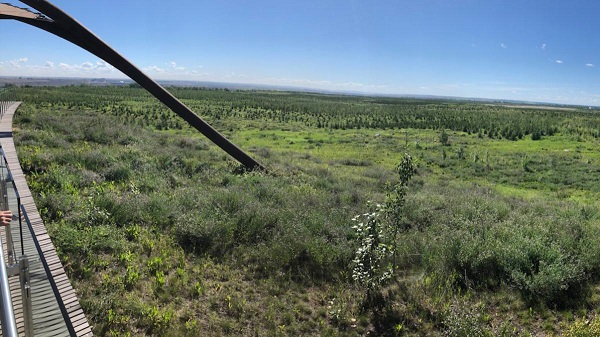
Wapisiw Lookout, reclaimed site of the oil sands industry’s first tailings pond, which started in 1967. The area was restored to a solid surface in 2010 and now functions as a 220-acre watershed. Photo courtesy Suncor Energy
From the Canadian Energy Centre
By CEC Research
Mines demonstrate significant strides through technological innovation
Tailings are a byproduct of mining operations around the world.
In Alberta’s oil sands, tailings are a fluid mixture of water, sand, silt, clay and residual bitumen generated during the extraction process.
Engineered basins or “tailings ponds” store the material and help oil sands mining projects recycle water, reducing the amount withdrawn from the Athabasca River.
In 2023, 79 per cent of the water used for oil sands mining was recycled, according to the latest data from the Alberta Energy Regulator (AER).
Decades of operations, rising production and federal regulations prohibiting the release of process-affected water have contributed to a significant accumulation of oil sands fluid tailings.
The Mining Association of Canada describes that:
“Like many other industrial processes, the oil sands mining process requires water.
However, while many other types of mines in Canada like copper, nickel, gold, iron ore and diamond mines are allowed to release water (effluent) to an aquatic environment provided that it meets stringent regulatory requirements, there are no such regulations for oil sands mines.
Instead, these mines have had to retain most of the water used in their processes, and significant amounts of accumulated precipitation, since the mines began operating.”
Despite this ongoing challenge, oil sands mining operators have made significant strides in reducing fluid tailings through technological innovation.
This is demonstrated by reductions in “legacy fluid tailings” since 2015.
Legacy Fluid Tailings vs. New Fluid Tailings
As part of implementing the Tailings Management Framework introduced in March 2015, the AER released Directive 085: Fluid Tailings Management for Oil Sands Mining Projects in July 2016.
Directive 085 introduced new criteria for the measurement and closure of “legacy fluid tailings” separate from those applied to “new fluid tailings.”
Legacy fluid tailings are defined as those deposited in storage before January 1, 2015, while new fluid tailings are those deposited in storage after January 1, 2015.
The new rules specified that new fluid tailings must be ready to reclaim ten years after the end of a mine’s life, while legacy fluid tailings must be ready to reclaim by the end of a mine’s life.
Total Oil Sands Legacy Fluid Tailings
Alberta’s oil sands mining sector decreased total legacy fluid tailings by approximately 40 per cent between 2015 and 2024, according to the latest company reporting to the AER.
Total legacy fluid tailings in 2024 were approximately 623 million cubic metres, down from about one billion cubic metres in 2015.
The reductions are led by the sector’s longest-running projects: Suncor Energy’s Base Mine (opened in 1967), Syncrude’s Mildred Lake Mine (opened in 1978), and Syncrude’s Aurora North Mine (opened in 2001). All are now operated by Suncor Energy.
The Horizon Mine, operated by Canadian Natural Resources (opened in 2009) also reports a significant reduction in legacy fluid tailings.
The Muskeg River Mine (opened in 2002) and Jackpine Mine (opened in 2010) had modest changes in legacy fluid tailings over the period. Both are now operated by Canadian Natural Resources.
Imperial Oil’s Kearl Mine (opened in 2013) and Suncor Energy’s Fort Hills Mine (opened in 2018) have no reported legacy fluid tailings.
Suncor Energy Base Mine
Between 2015 and 2024, Suncor Energy’s Base Mine reduced legacy fluid tailings by approximately 98 per cent, from 293 million cubic metres to 6 million cubic metres.
Syncrude Mildred Lake Mine
Between 2015 and 2024, Syncrude’s Mildred Lake Mine reduced legacy fluid tailings by approximately 15 per cent, from 457 million cubic metres to 389 million cubic metres.
Syncrude Aurora North Mine
Between 2015 and 2024, Syncrude’s Aurora North Mine reduced legacy fluid tailings by approximately 25 per cent, from 102 million cubic metres to 77 million cubic metres.
Canadian Natural Resources Horizon Mine
Between 2015 and 2024, Canadian Natural Resources’ Horizon Mine reduced legacy fluid tailings by approximately 36 per cent, from 66 million cubic metres to 42 million cubic metres.
Total Oil Sands Fluid Tailings
Reducing legacy fluid tailings has helped slow the overall growth of fluid tailings across the oil sands sector.
Without efforts to reduce legacy fluid tailings, the total oil sands fluid tailings footprint today would be approximately 1.6 billion cubic metres.
The current fluid tailings volume stands at approximately 1.2 billion cubic metres, up from roughly 1.1 billion in 2015.
The unaltered reproduction of this content is free of charge with attribution to the Canadian Energy Centre.
-

 Business1 day ago
Business1 day agoLatest shakedown attempt by Canada Post underscores need for privatization
-
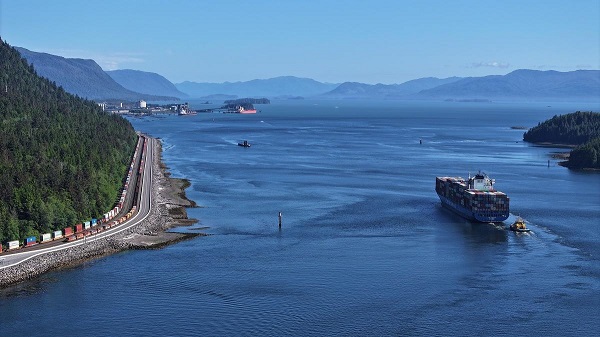
 Business1 day ago
Business1 day agoWhy it’s time to repeal the oil tanker ban on B.C.’s north coast
-

 Aristotle Foundation2 days ago
Aristotle Foundation2 days agoHow Vimy Ridge Shaped Canada
-
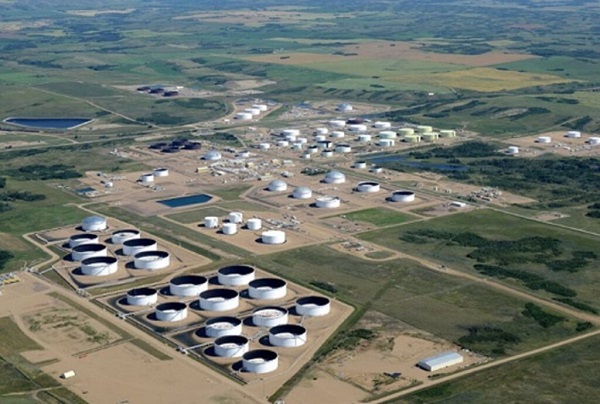
 Alberta1 day ago
Alberta1 day agoPierre Poilievre – Per Capita, Hardisty, Alberta Is the Most Important Little Town In Canada
-
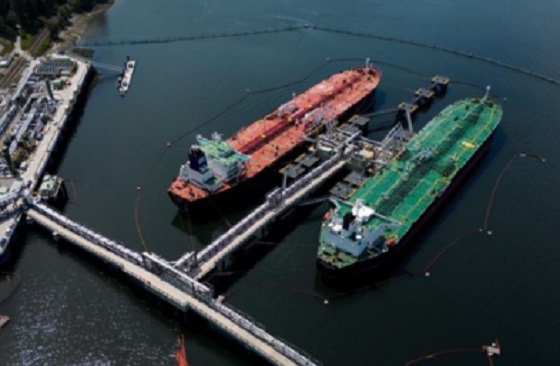
 Energy1 day ago
Energy1 day agoIf Canada Wants to be the World’s Energy Partner, We Need to Act Like It
-

 Alberta1 day ago
Alberta1 day agoAlberta Provincial Police – New chief of Independent Agency Police Service
-

 International2 days ago
International2 days agoCBS settles with Trump over doctored 60 Minutes Harris interview
-

 MxM News1 day ago
MxM News1 day agoUPenn strips Lia Thomas of women’s swimming titles after Title IX investigation










